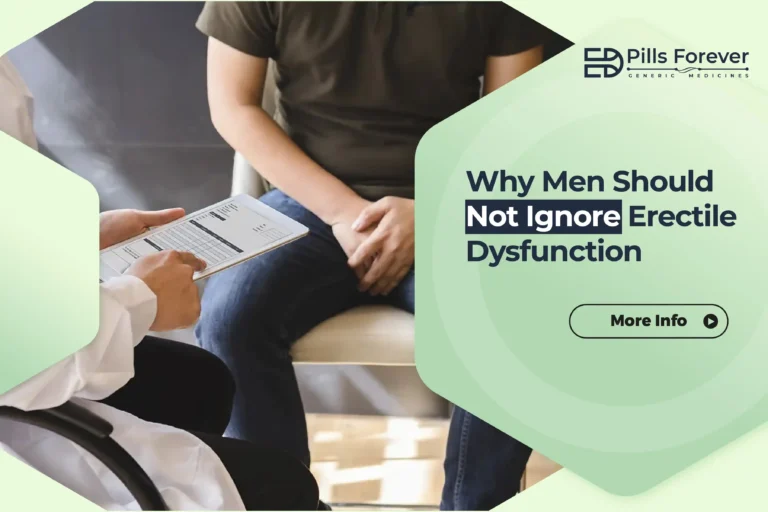Side Effects of Low Testosterone
Testosterone is most often considered the actual defining hormone of masculinity. It plays a very pivotal role in defining men’s health overall, thus impacting everything right from sex drive to muscle mass to one’s mood as well. But when its levels drop drastically, the consequences can be far-reaching for it actually. Low testosterone, or “Low T,” is not just about aging or fatigue; it is actually a serious health concern that affects both men and women altogether.
In this detailed article, we will explore the side effects of low testosterone, its symptoms, the role of several testosterone boosters, the benefits of testosterone replacement therapy (TRT), and how one can manage and reverse this condition very effectively.
What is Testosterone?
Testosterone is actually a steroid hormone that is primarily produced in the testes (in case of men) and in the ovaries (in case of women). In men, it mainly regulates:
- Sexual function
- Muscle growth
- Bone density
- Mood and energy
- Hair growth
- Fat distribution
A testosterone test is something that can determine whether your levels of the hormone fall in the normal range. Healthy adult males always typically have their levels between 300 to 1,000 ng/dL.
Understanding Low Testosterone (Low T)
Low testosterone, which is also medically referred to as hypogonadism, mainly occurs when the body doesn’t produce enough testosterone in the body. It is a common condition that is particularly very common among older men, but it can also affect younger individuals and even women as well.
There are two main types of it:
- Primary hypogonadism – This is something that originates in the testes
- Secondary hypogonadism – This also results from issues that occur in the pituitary gland or hypothalamus
Signs and Symptoms of Low Testosterone
Early identification of low testosterone symptoms is actually the key to its effective treatment. The following are the most common signs of low testosterone in men:
1. Low Sex Drive
One of the major hallmark signs of low testosterone in men is a decreased libido. Testosterone is a hormone that plays a major role in sexual arousal. Men may at times find themselves quite disinterested in sexual activity, which can also strain their relationships.
2. Erectile Dysfunction
While low testosterone is not always the only cause of ED, it majorly contributed significantly towards it. Men may at times have difficulty achieving or maintaining an erection. In some of the cases, medications like Cenforce 120 are often prescribed in order to improve erectile function alongside hormone therapy in men.
3. Fatigue and Low Energy
Low T can at times cause chronic fatigue, even after getting adequate sleep. Energy levels often drop, thus leading to sluggishness and decreased productivity throughout the day.
4. Loss of Muscle Mass
Testosterone is something that helps build and maintain proper muscle. Men with low testosterone often at times notice a decrease in their muscle tone and physical strength overall.
5. Increased Body Fat
Men may also develop more body fat, particularly around the abdomen region. Some even develop something called gynecomastia (enlarged breast tissue).
6. Mood Changes
Low testosterone can often lead to mood swings, lots of irritability, increased anxiety, and even severe depression. These symptoms are often mistaken for several other psychological disorders.
7. Reduced Bone Density
Testosterone also contributes to strong bones. Low levels can increase the risk of fractures and osteoporosis, especially in the case of older men.
8. Hair Loss
While hair loss is a natural part of aging, low T can accelerate it or cause unexpected loss in areas like the face or body.
According to mens health experts, these symptoms are often overlooked or misdiagnosed, leading many to suffer in silence.
Low Testosterone in Women
While testosterone is considered a male hormone, low testosterone in women can also cause health issues such as:
- Decreased libido
- Fatigue
- Muscle weakness
- Mood disturbances
- Fertility issues
Women typically have lower testosterone levels than men, but a significant drop can still have noticeable effects.
What Causes Low Testosterone?
Multiple factors can lead to decreased testosterone levels, including:
- Aging – Natural decline after age 30
- Chronic illness – Diabetes, obesity, or liver disease
- Injury or trauma – Especially to the testes
- Certain medications – Such as opioids or steroids
- Stress and poor sleep
- Substance abuse
Some men are genetically predisposed to hypogonadism, while others experience hormonal imbalances due to environmental or lifestyle factors.
The Role of Testosterone Replacement Therapy (TRT)
Testosterone replacement therapy (TRT) is one of the most effective treatments for low testosterone. It aims to restore hormone levels to normal and alleviate symptoms.
Types of TRT:
- Injections (intramuscular or subcutaneous)
- Gels and creams
- Patches
- Pellets (implanted under the skin)
TRT can improve energy levels, mood, libido, muscle mass, and bone density. It may also enhance sexual performance, reducing the need for ED drugs in some cases.
If you’re considering TRT therapy, a testosterone test is essential to determine baseline hormone levels and ensure treatment is necessary.
Risks and Side Effects of TRT
While TRT offers benefits, it’s not without risks:
- Acne and oily skin
- Fluid retention
- Breast enlargement
- Reduced sperm production and fertility
- Increased red blood cell count (risk of clotting)
- Potential cardiovascular issues (still under debate)
Therefore, TRT therapy should always be administered under medical supervision.
Natural Testosterone Boosters
Not everyone with low testosterone requires medical therapy. Some individuals benefit from testosterone booster supplements and natural methods.
How to Boost Testosterone Naturally:
- Exercise Regularly
- Resistance training and HIIT are particularly effective.
- Resistance training and HIIT are particularly effective.
- Eat a Balanced Diet
- Include healthy fats, lean protein, and micronutrients like zinc and vitamin D.
- Include healthy fats, lean protein, and micronutrients like zinc and vitamin D.
- Get Enough Sleep
- Aim for 7–9 hours of quality sleep per night.
- Aim for 7–9 hours of quality sleep per night.
- Reduce Stress
- Chronic stress elevates cortisol, which suppresses testosterone.
- Chronic stress elevates cortisol, which suppresses testosterone.
- Lose Excess Weight
- Obesity is closely linked to low testosterone levels.
- Obesity is closely linked to low testosterone levels.
- Avoid Alcohol and Drugs
- These can impair hormone production.
- These can impair hormone production.
- Use Natural Testosterone Boosters
- Herbal supplements like fenugreek, ashwagandha, and D-aspartic acid may help.
- Herbal supplements like fenugreek, ashwagandha, and D-aspartic acid may help.
These strategies are often part of broader mens health programs that aim to improve overall vitality and performance.
How to Increase Testosterone: When to Consider Help
Knowing how to increase testosterone can make a huge difference in quality of life. But sometimes lifestyle changes aren’t enough.
Consider medical help if you experience:
- Multiple symptoms of low T
- Persistent sexual dysfunction
- Unexplained mood changes or fatigue
- Poor response to exercise or diet efforts
Early diagnosis and treatment—whether through testosterone replacement therapy or natural testosterone boosters—can prevent long-term complications.
Conclusion
Low testosterone is more than just a number—it’s a condition that can severely affect your physical, emotional, and sexual health. Understanding the signs of low testosterone in men, recognizing when to get tested, and exploring your treatment options can help you take back control.
Whether through TRT therapy, lifestyle changes, or medications like Cenforce 120 to manage related ED symptoms, addressing the root of the problem is essential for restoring your health and confidence.
FAQs
What happens if your testosterone is too low?
Low testosterone levels in men can lead to a variety of symptoms and potential health issues. These include reduced libido, erectile dysfunction, decreased energy and strength, mood changes, increased body fat, and potential bone loss, impacting both physical and mental well-being.
What happens if low testosterone is not treated?
If low testosterone is left untreated, men may experience decreased muscle mass and strength, weight gain, mood changes, and cognitive difficulties. In addition, untreated low testosterone can increase the risk of osteoporosis, cardiovascular disease, and metabolic syndrome. Some men may also experience fertility issues, erectile dysfunction, and a general decline in physical and emotional well-being.
What are signs of low testosterone?
Low testosterone, also known as male hypogonadism, can manifest in various ways, including a decrease in sex drive, erectile dysfunction, fatigue, and mood changes. Other potential signs include decreased muscle mass, loss of body hair, and a decline in energy levels.
Can a man with low testosterone get hard?
Yes, low testosterone can make it harder to achieve and maintain an erection, but it’s not a definitive cause of erectile dysfunction. While testosterone is crucial for sexual function and libido, other factors like age, chronic conditions, and lifestyle choices also play a role.
What is an unsafe testosterone level?
An “unsafe” testosterone level generally refers to levels outside the normal range, either too high or too low, which can lead to various health problems. While the normal range for men is typically 300-1070 ng/dL, levels above 1000 ng/dL or below 264 ng/dL are often considered unsafe.




